Businesses that take a customer orientation approach experience a boost in sa...
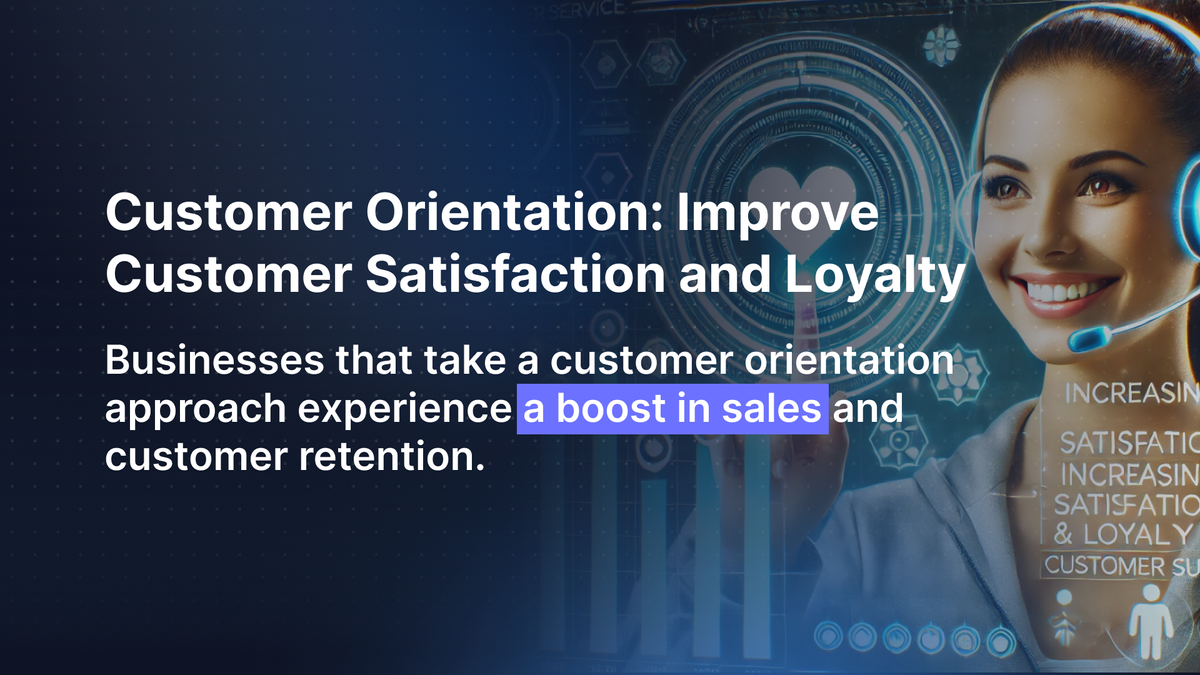
What is that aspect of a business that makes some companies effortlessly gain and retain loyal customers while others even struggle to attract them? Some may think it is the product; others may wonder if an effective marketing strategy is the key. These aspects have their importance. However the secret lies in customer orientation, which actually helps set a business apart from the rest.
How so? Customer retention rates increase by 5**%** for every 1% increase in customer satisfaction. A customer-oriented company always puts its customers before its own needs and pays them back. But what exactly does it mean to be customer-oriented, and how can you adopt a customer service culture in your organization? Let’s walk through the core principles to help you understand them better.
Putting the needs of a customer over the needs of a business is customer orientation. This customer-oriented approach prioritizes the needs, processes, and systems of the company such that they only revolve around the needs of a customer. Client-oriented companies understand that they won’t reach their desired level of success unless their customers are satisfied.
They know investing in customer experience can help them improve up to 42% of cross-selling and upselling. Since customer acquisition is difficult and expensive, companies focus on building strategies to retain existing customers. They place customers at the center of their business decisions and operations to keep them happy.
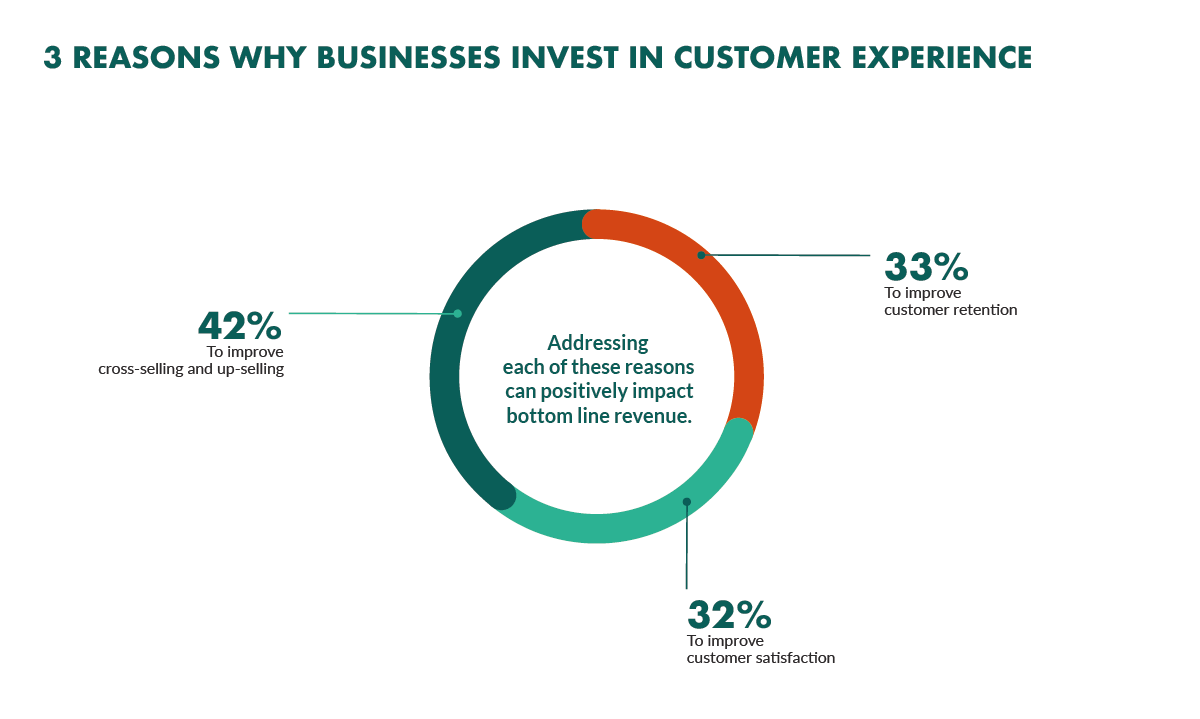
Source: European Business Review
The best part is that companies can now enjoy seamless customer interaction with the help of AI Support. AI has made it easier to provide instant 24/7 support to customers, answer common questions, solve problems, and guide them through processes efficiently.
An AI customer service team can handle all the tedious tasks and hence reduce the workload for the customer service teams. In essence, AI plays an important role in enhancing customer service in today’s times.
Customer orientation ensures customer satisfaction and loyalty as it completely focuses on fulfilling customers' needs. With the right customer orientation strategy in hand, you can build long-lasting relationships with customers and stand out in the crowded marketplace.
Customer-oriented businesses always rely on customer feedback to refine their offerings and strategies to provide the best experience to their targeted audience. Such businesses are more likely to have a better brand reputation and increased profits.
A business cannot fully adopt customer orientation unless it implements the core principles of customer orientation in all the departments of the organization. These qualities are essential to ensure you deliver an amazing experience to your customers at every level. Here’s how to be customer-oriented:
A customer-oriented business should be highly adaptable to changing customer needs and market trends. It can continuously evaluate the results of current strategies and adjust them based on customer feedback and market demands. According to research, companies that tend to be more adaptable achieve better revenue growth and profit than those that are not.
In fact, according to McKinsey & Company, a highly successful agile transformation can lead to a 30% gain in efficiency and make an organization five to ten faster. That said, a company can maintain relevance and better value by staying adaptable in all the necessary aspects.
To be more customer-oriented, you need to develop a high level of empathy for your customers. When you are empathetic, you don’t see the customers merely as a transaction but as a real person with emotions. When you have empathy for them, you try to imagine yourself in their shoes and address every issue that they may encounter.
Building such an emotional connection allows you to provide more personalized and compassionate service so customers can feel valued and understood. You won’t realize it, but in many instances, you can diffuse customer anger by showing empathy and being rational. Even if you cannot completely solve a problem, they’d still know your business offers good customer service.
Customers only choose companies they trust, and trust can be built through transparency and honesty. In fact, it’s such an important trait that about 75% of customers are willing to pay more to companies that stay transparent.
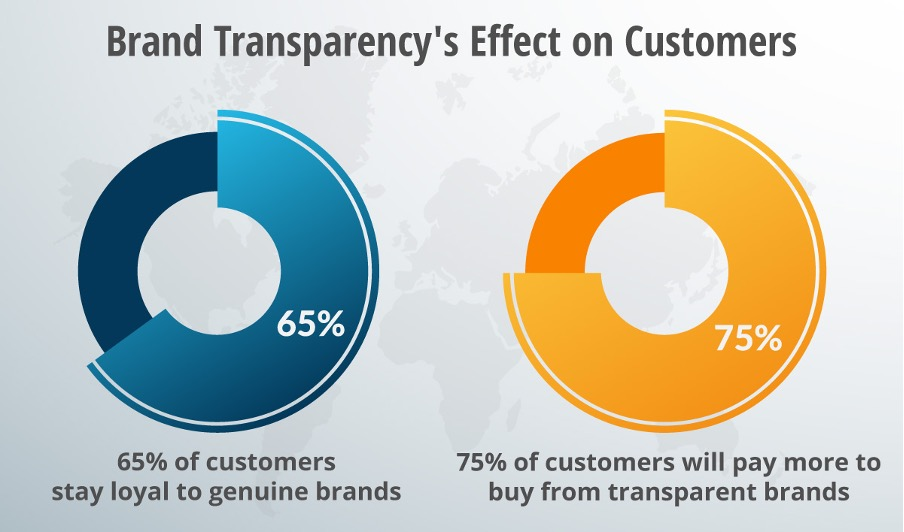
Source: Mobilise
Transparent practices include open, straightforward terms and conditions, fair prices, and open channels for feedback. When customer interactions are honest, and promises are fulfilled, customers are more likely to have a positive image of the brand and develop a trust-based relationship.
A customer-oriented business should adopt a proactive problem-solving approach to remove the obstacles that come in the way of its customers. This approach is focused on finding the best solutions through strong analytical and creative thinking skills. Learning from past experiences and improving the existing processes can significantly help improve customer retention rates.
A business should focus on this particular aspect because a single bad customer experience can lead to severe consequences, as shown in the picture below. Such experiences not only deter prospects but also tarnish a business's reputation.
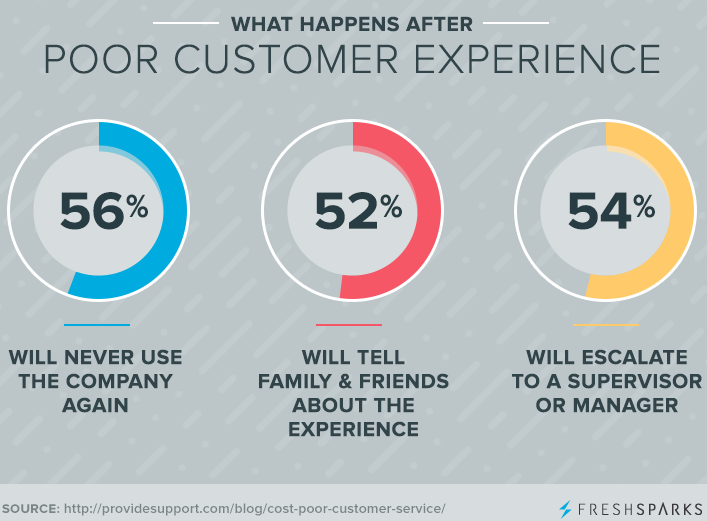
Active listening refers to fully understanding, concentrating, and responding to the customer's words. The goal is to make customers feel validated and understood, and this is possible only when you consider their needs and pain points. However, you should understand that active listening itself requires a couple of skills: self-control, patience, and a willingness to empathize.
Though it’s not easy, the employees can learn it with time, as it is in the best interest of your business.
If you intend to mold your business accordion such that it becomes customer-oriented, you need to follow the key components of a customer-oriented strategy. Here is what this strategy includes:
Collecting customer feedback clearly indicates that a brand values their customer’s opinions. It is also important to know where your business is lacking so you can take the right steps to alter the existing strategies.
While surveys and interviews are just one way of gathering feedback, social media can also provide valuable insights about your products and business. However, merely gaining these insights would be of no use unless you act on the feedback to improve customer experience.
Customer feedback is of significant importance; here’s why:
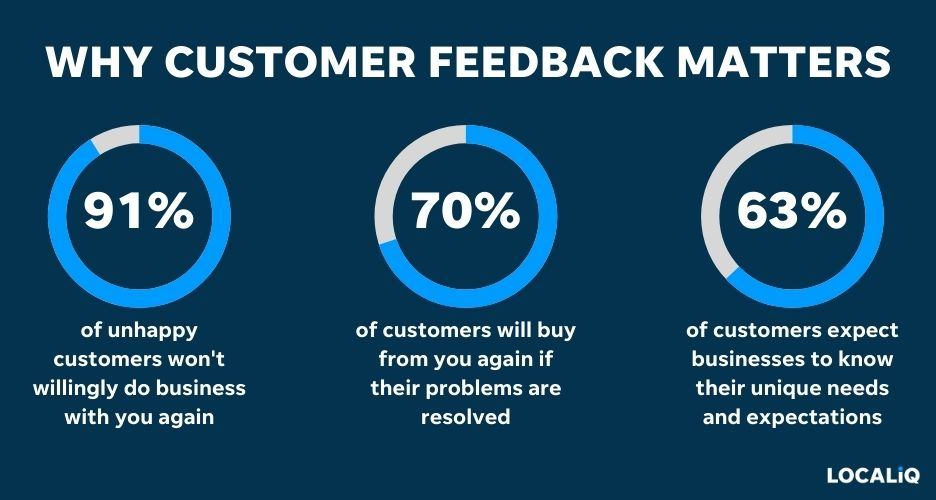
Source: LOCALiQ
To make your company customer-oriented in the real sense, you need to make plans and set goals. By that, we mean having clear goals and objectives concerning customer satisfaction, such as reducing response time, improving product quality, and increasing customer satisfaction scores.
This can be done by taking small steps toward each goal, like investing in AI Chatbot customer service, using a proper hosting service, or reducing bloat and source sizes. When you regularly review progress against these goals, your strategy will get on track, and if anything is out of place, you can make adjustments as needed.
The first step in building competent customer success is to hire empathetic people who understand the technicalities of this field and are easy to train. Though you can always train and groom the team, it’s essential they inherently have certain characteristics, like patience and empathy.
Once you have the right team onboard, provide them with the necessary tools to ensure customer satisfaction. For instance, if customers feel frustrated on chat, a customer service representative can directly call them if they have access to phone service.
Customer service, sales department, or product development is nothing on its own. All these departments in a company should collaborate with a customer-centric goal in mind. A business can always make a customer persona depicting the details of the customers who buy your products or services. This gives a lot of insights into their needs, interests, and pain points.
Collaboration is indeed a key element in a company’s success. It plays such an important role that companies observe up to 37% increases in sales and 41% increases in customer satisfaction ratings.

Source: Zippia
When all the relevant departments will have these details, the results of their work will always be more customer-oriented. In addition, regular cross-meetings among the various departments will help maintain alignment in the company.
Let us have a look at some real-life examples of big companies that have made their mark in the work solely by adopting a customer-oriented approach.
Amazon is a prime example of a consumer-oriented company. It can even reduce its costs across operation networks to ensure the best customer experience. This is clearly visible from its mission statement, “to be Earth's most customer-centric company.”
They adopt a customer-first approach, offer a smooth shopping experience, fast shipping, and easy returns, and continuously work to improve customer experience, such as with Amazon Prime, which offers various perks to its members.
Netflix constantly uses simple and efficient customer surveys to get their customer's feedback. Not just that, their user interface speaks in a thoroughly user-friendly manner that keeps the customers hooked. In addition, they use advanced algorithms to offer personalized recommendations based on the viewing habits of the customers. This platform is loved by users so much that it even beats Amazon in customer satisfaction.
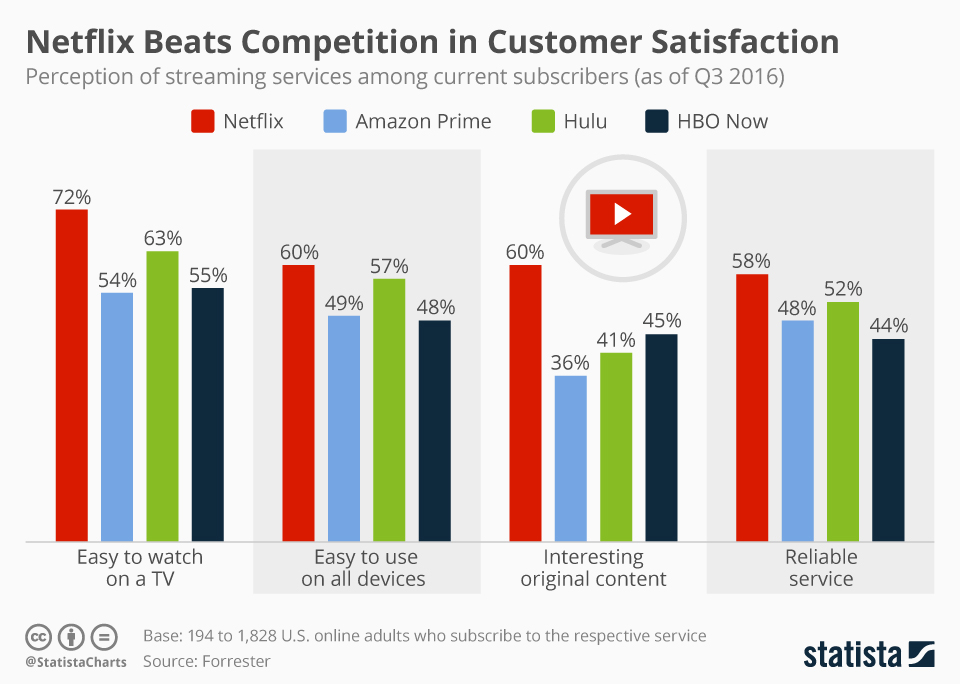
Source: Statista
They take a smart approach, track the viewing history of customers, and collect data from all possible touchpoints to personalize the experience. This truly keeps its users engaged, happy, and satisfied.
Slack is a cloud-based communication tool that has simplified workplace communication. The business focuses a lot on gathering customer feedback and implementing improvements to ensure the platform constantly revolves around customer needs. Their success can be measured by the following statistics:

Source: demandsage
Ever since this application was created, it has focused on improving customer experience over all other areas of its business. Its goal was to create a product that meets customer needs. And it’s certainly their focus on delivering quality customer service that has led to its natural growth.
Zappos is another popular retailer known for its excellent customer service. It is one of the first online retailers that offer a 365-day return policy and free shipping and returns. When they say they “deliver WOW,” they truly mean it. They went from almost nothing to a billion-dollar business in less than a decade.
The fun fact is that almost 75% of their sales come from returning customers. They have some loyal and brand-promoted customers.
This truly proves how they just focus on one thing: keeping customers happy - no matter what.
The key to building a strong brand reputation lies in customer orientation. Having customer orientation as a foundation of your business will always prove helpful in attracting and retaining customers. So, if you intend to build a loyal customer base, you need to return to your business goals over and over again and build a strong customer orientation strategy.
And remember, it’s not just about the customer service department. Every department in the company should communicate and collaborate to achieve the company's major goal, which is being customer-oriented.
Customer orientation is a business approach that focuses on creating long-term relationships with customers. It is more of a philosophy around which a company revolves. However, customer service is the direct interaction and support provided to the customers to address their concerns.
It is both internal and external. For customer orientation to be successful, all parts of the business, from top management to marketing, service, and sales, should work together in a uniform and holistic way.
Customer orientation is important to ensure the company consistently meets customer needs and develops long-term customer relationships and loyalty.
Customer orientation ensures the product and services are tailored according to the customer's needs. This leads to higher satisfaction and stronger trust among the customers.